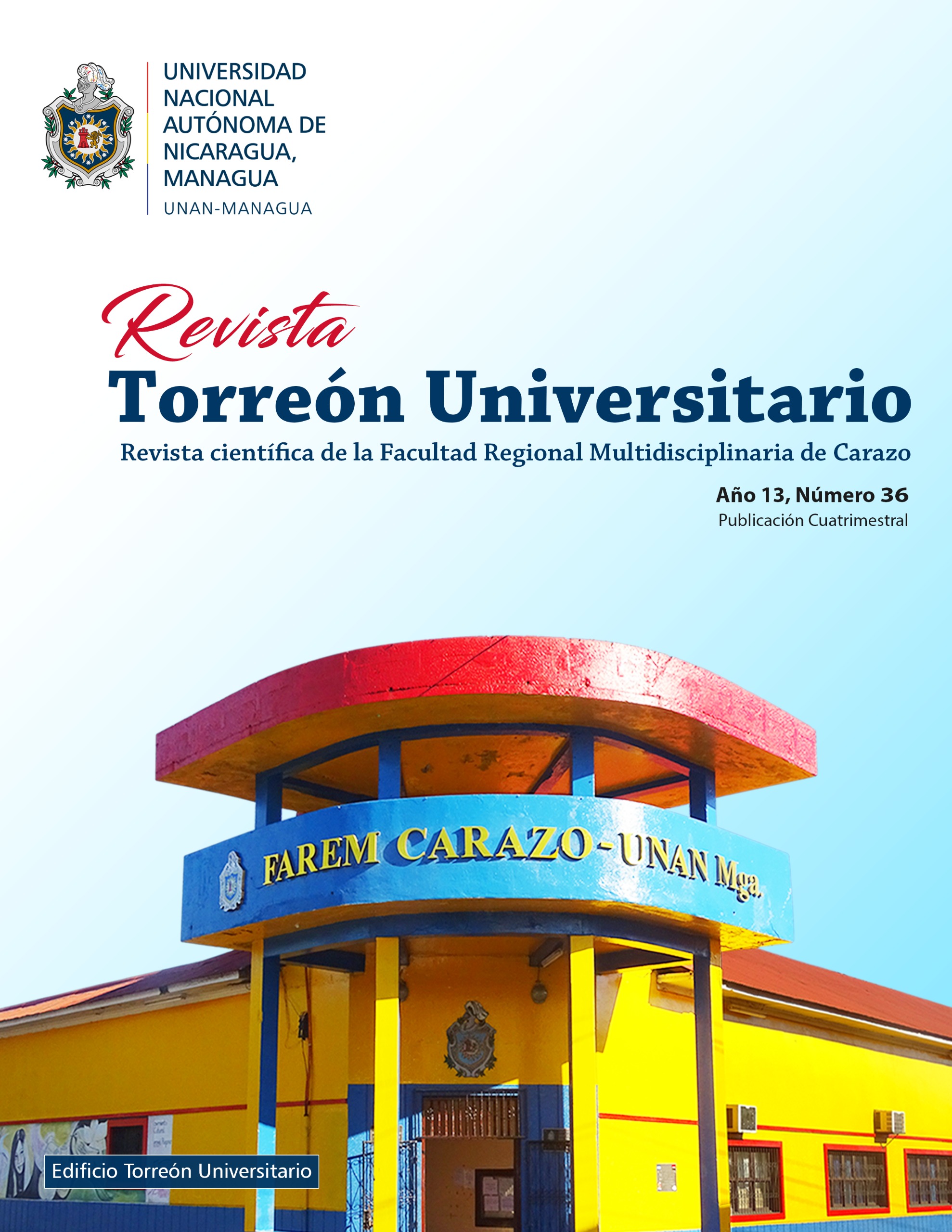Development of educational robotics in Nicaragua: Focus on secondary education and the use of robotics kits
DOI:
https://doi.org/10.5377/rtu.v13i36.17636Keywords:
education, design, learn, programming, roboticsAbstract
The integration of robotics in secondary education has been a growing trend in recent years. Robotics kits have become a valuable tool for teaching physics and math concepts in a more hands-on and visually appealing way for students. Robotics kits allow students to build and program robots to perform specific tasks. This gives them the opportunity to apply the theoretical concepts they have learned in class in a practical and tangible context. Additionally, students can experiment with different designs and programs to see how they affect the robot's behavior. The integration of robotics in secondary education can also help students develop important skills, such as problem solving, creativity, and collaboration. Working as a team to build and program a robot can be an enriching and motivating experience for students. In the area of physics, robotics kits can be used to teach concepts like kinematics, dynamics, and energy. Students can build robots that simulate the movement of objects in different situations and see how the robot's behavior changes based on the parameters they have programmed. In the area of mathematics, robotics kits can be used to teach concepts such as geometry, trigonometry, and linear programming. Students can build robots that perform complex mathematical calculations and see how these concepts apply in a practical context. In summary, the integration of robotics in secondary education can be a valuable tool to teach physics and mathematics concepts in a more practical and visually appealing way for students. Plus, it can help develop important skills like problem solving, creativity, and collaboration.
Downloads
References
El nuevo Dario. (2019). El Nuevo Diario. Obtenido de https://www.elnuevodiario.com.ni/nacionales/443685-robotica-nicaragua-cada-vez-mas-estudiantes-interes/
El Nuevo Diario. (2019). El Nuevo Diario. Obtenido de https://www.elnuevodiario.com.ni/suplementos/tecnologia/493007-universidad-nacional-ingenieria-fomenta-robotica/
El Nuevo Diario. (2020). El Nuevo Diario. Obtenido de https://www.elnuevodiario.com.ni/nacionales/438086-promueven-educacion-stem/
Fundación Teran. (2020). Fundación Teran. Obtenido de https://fundacionzt.org/programa-educativo/
Guzmán, & Herndandez. (2003). Metodlogía de la Investigación. México DF: McGraw Hill Interamericanal.
MINED. Obtenido de https://www.mined.gob.ni/mineduc/mi-robot-mi-amigo-una-experiencia-de-aprendizaje-en-robotica/
MINED. (2021). MINED. Obtenido de https://www.mined.gob.ni/mineduc/firman-acuerdo-para-fortalecer-la-educacion-en-tecnologia-y-robotica/
Moreno, I., Muñoz, L., Serracín, J. R., Quintero, J., Patiño, K. P., & Quiel, J. (2012). LA ROBÓTICA EDUCATIVA, UNA HERRAMIENTA PARA LA ENSEÑANZA-APRENDIZAJE DE LAS CIENCIAS Y LAS TECNOLOGÍAS . Universidad de Salamanca, 18.
Ramírez, P. A., & Sosa, H. A. (2013). Aprendizaje de y con robótica, algunas experiencias. Revista Educación, 21.
Sánchez, F. Á., & Guzmán, A. F. (2012). La Robótica como un recurso para facilitar el aprendizaje. Universidad de Salamanca, 17.
Uruguay, U. O. (2018). Universidad ORT Uruguay. Obtenido de https://fi.ort.edu.uy/blog/que-es-la-robotica-y-cuales-son-sus-usos
Published
How to Cite
Issue
Section
License
Copyright (c) 2024 Universidad Nacional Autónoma de Nicaragua, Managua

This work is licensed under a Creative Commons Attribution-NonCommercial-NoDerivatives 4.0 International License.
Los autores que publican en esta revista están de acuerdo con los siguientes términos.
- El autor o los autores de los artículos, ensayos o investigaciones conceden a la Universidad Nacional Autónoma de Nicaragua, Managua (UNAN-Managua) los derechos de edición (copyright) del trabajo enviado, por consiguiente la Universidad cuenta con el derecho exclusivo para publicar el artículo durante el periodo completo de los derechos de autor.
- Estos derechos de autor/ autores autorizan a la Revista Torreón Universitario y a la Universidad editar y divulgar/publicar el artículo en dicha Revista, incluyendo reproducción impresa y electrónica, el almacenamiento, recuperación y cualquier otro tipo de publicación, y fuentes de información secundaria como servicios de resúmenes y bases de datos, así mismo la facultan a proteger el artículo contra el uso no autorizado para su difusión por medios impresos o electrónicos (PDF, HTML, EPUB, XML u otros).
Licencia para el uso del contenido
La revista hace uso de la Licencia Creative Commons Atribución-NoComercial-SinDerivar 4.0 Internacional.
Bajo esta declaración:

Este revista está sujeta a una licencia de Creative Commons Reconocimiento-NoComercial-SinObraDerivada 4.0 Internacional. Puede ser copiada, distribuida y transmitida públicamente siempre y cuando se cite al autor y la fuente (Revista Torreón Universitario), no debe modificarse ni utilizarse con ningún fin comercial. La licencia completa se puede consultar en http://creativecommons.org/licenses/by-nc-nd/4.0/.

